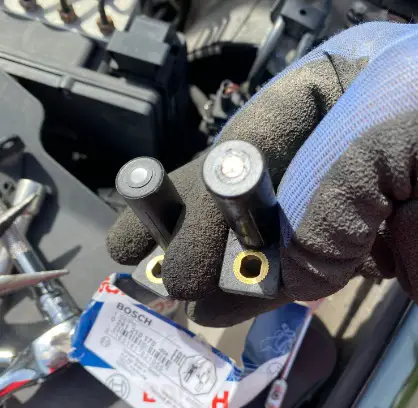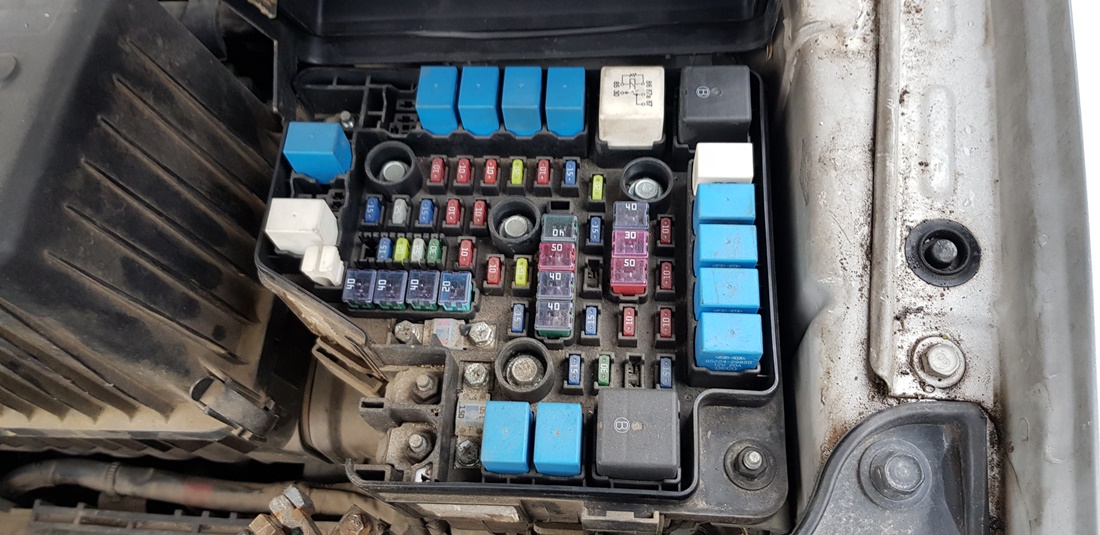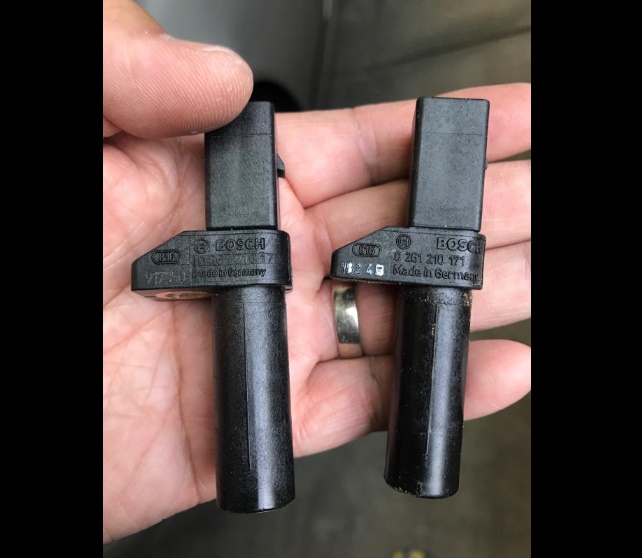We use vehicles a lot these days. We use them to go to school, get to work, to our doctor’s appointments, and whatnot. It is important to have a fully operational vehicle that will take us anywhere we need to be.
But like all things, vehicles do tend to break down every once in a while. If you are driving down the road and your car shuts off immediately triggering the check gauges light, stay tuned.
Do not be afraid of huge repair bills. The issue of your vehicle just shutting off doesn’t have to be an expensive repair. Here are the most common causes why the check gauge light comes on and the car shuts off:
- Key Takeaway
- Why Check Gauges Light Comes On And Car Shuts Off
- FAQs
- Q: What does the Check Gauges light indicate?
- Q: Why does the Check Gauges light come on?
- Q: Why does my car shut off when the Check Gauges light comes on?
- Q: What should I do when the Check Gauges light comes on and my car shuts off?
- Q: Can I continue to drive my car when the Check Gauges light is on?
- Q: Will the Check Gauges light indicate which gauge or system has a problem?
- Q: How can I troubleshoot the Check Gauges light issue?
- Q: Can a faulty sensor trigger the Check Gauges light?
- Q: How much does it cost to fix the Check Gauges light issue?
- Q: Can I ignore the Check Gauges light if it turns off?
- In Conclusion
Key Takeaway
- The “check gauges” light comes on and the car shuts off usually because there is a significant issue with one of the car’s vital systems, such as oil pressure, charging system, or engine temperature, potentially indicating a serious malfunction that needs immediate attention.
- The check engine gauge light comes on and the car shuts off because of a blown fuel pump fuse which will restrict the fuel supply, a faulty fuel pump which also can restrict the fuel flow, a faulty crankshaft position sensor that tells the computer when to send fuel, failing alternator which is supposed to recharge the battery, and damaged battery terminal clamps which are supposed to transfer power from and to the battery.
Why Check Gauges Light Comes On And Car Shuts Off
- Blown Fuel Pump Fuse
- Faulty Fuel Pump
- Faulty Crankshaft Position Sensor
- Failing Alternator
- Damaged Battery Terminal Clamps
1. Blown Fuel Pump Fuse

When the fuse wire inside the fuel pump fuse melts due to overload, this will cut the current flowing to the fuel pump and will prevent it from being damaged, but the check gauge light will come on and the car will shut off.
The purpose of the fuel pump fuse is to protect the fuel pump from burning up whenever there is an overload. When the fuel pump, for some reason, requests more electrical power than it can handle, the fuel pump fuse acts as a shield and will blow up in order to prevent the high current from reaching and burning the fuel pump.
The fuel pump fuse contains a wire that is made of alloy lead and tin like most 10 amp fuses. The fuses that have higher amperage are made of aluminum, zinc, and copper. This wire, in this case, the fuel pump fuse wire can only handle 10 amps of current before it reaches a certain ”hot” temperature and melts.
It is also very important to use the correct fuse amperage when replacing the fuel pump fuse. The fuel pump fuse is 10 amps and you shouldn’t use 15 amps fuse instead. This will immediately cause the fuse to blow and your car will shut off while driving.
Without the correct fuel pump fuse, there will be no electrical power traveling to the fuel pump. The fuel pump won’t be able to perform its task. This will result in your vehicle shutting off while driving and the check gauge light will come on says Vehq.
2. Faulty Fuel Pump

When the filters located on the fuel pump assembly get clogged up, the fuel pump has to work even harder in order to pull fuel from the fuel tank and send it to the fuel injectors. This often causes fuel pumps to actually fail to trigger a check gauge light and the car will shut off.
The fuel pump is responsible for pulling gas out of the gas tank and sending it to the front of the car where it’s injected through the fuel injectors into the intake manifold. The first line of defense for the fuel pump is the suction filter on the bottom of the fuel pump. This filter makes sure that no debris gets caught within the fuel pump itself.
The fuel gets sucked in from the gas tank through the suction filter, it travels into the actual fuel pump. Then, it goes through another filter before heading over to the fuel injectors. Having two filters is great, but it is also a liability.
Fuel pumps are designed in a way that when they pull fuel from the gas tank, it actually lubricates them and cools them down. Driving on a low-fuel tank or simply having dirty and clogged fuel filters can lead to sucking air instead of fuel and the pump will get warm and can fail.
A failing fuel pump will often send not enough fuel to the fuel injectors. There will simply be not enough fuel for combustion to occur in all cylinders. This leads to engine misfire and of course, without enough fuel in the engine, the engine will shut off.
Most cars don’t have sensors on the actual fuel pump to measure the pressure. As a result, it will display the check gauge light as the engine shuts off.
3. Faulty Crankshaft Position Sensor

A faulty crankshaft position sensor is not capable of measuring the rotations of the engine and determining the position of the crankshaft and will often send false data or no data at all to the main vehicle computer. Without any data, or with false data, the PCM will not know how to adjust the fuel injection timing and the vehicle will shut off and a check gauge light will be triggered as a result.
Crankshaft position sensors are used in both diesel and petrol vehicles. The purpose of the crankshaft position sensor is to send a signal to the performance control module (PCM – computer) and tell the position of the crankshaft so that the computer can notify the fuel injectors when to spray fuel in order for combustion to occur continuously without disrupting the performance of the engine.
The crankshaft position sensor is constantly working as soon as you start your vehicle. When your engine is idling, the rotation of the engine is low and the crankshaft position sensor is reporting this data to the computer so it can regulate the fuel injection timing.
As soon as you start driving your vehicle, the rotation of the engine increases. This data is again sent to the computer.
This can be pretty hard to diagnose because the crankshaft position sensor doesn’t just completely fail. It will start to fail every once in a while and the number of fails will increase over time.
So, when it first starts to show signs of failing, your vehicle will shut off and a check gauge light will come up. But, it will measure the position of the crankshaft correctly as you restart the vehicle, and the check gauge light will disappear.
4. Failing Alternator

A failing or faulty alternator will not be able to produce enough direct current to recharge the car battery while the engine is running. Without constantly receiving a new direct current from the alternator, the car battery won’t be able to power the electrical components of the vehicle and the car will shut off causing the check gauge light to come on.
The alternator is a very important part of all combustion engines. The shaft of the alternator is connected to the engine by a belt and a pulley. When you start the engine, the shaft of the alternator is forced to rotate. By doing so, it generates an alternating current. This alternating current is converted to a direct current by a rectifier.
Every vehicle needs a direct current to operate properly. Direct current is being used to power things such as lights, music systems, electric windows, and more. This electrical power is stored in the car battery.
So, when you start your vehicle, the battery provides a huge amount of current to the starter motor which turns the flywheel and starts the engine. At this point, the battery is partly drained during the startup. This is because of the large current required to turn the starter motor.
Once the engine is up and running, it creates mechanical power that turns the alternator. The alternator then creates the electrical power that charges the car battery. The battery then supplies power to all of the electrical components.
The direct current-producing capabilities of the alternator will slightly decrease. It won’t be able to keep up with the requirements. You might think that your car battery has failed. But, even if you replace it with a new battery, it won’t get fully charged because the alternator has failed.
5. Damaged Battery Terminal Clamps

The car battery terminals are used to connect the battery to the electrical system of the vehicle. They are usually made of lead which is a highly conductive metal and has low electrical resistance.
Regardless of how great your battery is, if the terminals are bad, no electrical power will be transferred from the car battery to the electrical system of the vehicle.
Corrosive or loose battery terminals create more resistance and apart from forcing the battery to work harder to send out electricity, they can also cause a disruption to the electrical supply and cause the car to shut off and trigger a check gauge light.
Let’s be honest. Battery terminals are a very overlooked part of the vehicle. Most people don’t pay attention to them at all. Without checking and cleaning the battery terminals, corrosion starts to form and interferes with their ability to conduct power.
Depending on how bad the corrosion on the terminal is, it can completely block the power flow.
We all know that proper and consistent power flow from the car battery and through the terminals is essential for a vehicle to run. So, the next time you are looking under the hood, make sure to check the battery terminals and clean them if needed.
FAQs
Q: What does the Check Gauges light indicate?
A: The Check Gauges light is an indication that there is a problem with one or more of the gauges in your car’s instrument panel. It can also be a warning that one of the important systems in your vehicle is not functioning properly.
Q: Why does the Check Gauges light come on?
A: The Check Gauges light can come on for several reasons. It could be due to a low oil pressure, high engine temperature, low fuel level, low battery voltage, or any other issue that affects the gauges in your car.
Q: Why does my car shut off when the Check Gauges light comes on?
A: When the Check Gauges light comes on and your car shuts off, it indicates a serious problem with one of the vital systems in your vehicle. This could be due to a failure in the fuel system, ignition system, or any other system that is crucial for the proper functioning of your car.
Q: What should I do when the Check Gauges light comes on and my car shuts off?
A: When the Check Gauges light comes on and your car shuts off, it is essential to pull over to a safe location as soon as possible. You should then check the gauges to identify any abnormalities and try to diagnose the problem. It is recommended to seek professional help or have your vehicle towed to a reputable auto repair shop.
Q: Can I continue to drive my car when the Check Gauges light is on?
A: It is not recommended to continue driving your car when the Check Gauges light is on. This light indicates a potential problem with one of the essential systems in your vehicle. Driving it further could cause further damage or even lead to a breakdown.
Q: Will the Check Gauges light indicate which gauge or system has a problem?
A: The Check Gauges light itself doesn’t differentiate which specific gauge or system has a problem. It serves as a general warning that there is an issue with one or more of the gauges or vital systems in your vehicle. You will need to check the individual gauges or get the car diagnosed to determine the exact problem.
Q: How can I troubleshoot the Check Gauges light issue?
A: To troubleshoot the Check Gauges light issue, you can start by checking the gauges individually. Look for any abnormal readings or indications of a problem. If the gauges appear normal, it is best to have your car diagnosed by a qualified technician who can use specialized tools to identify the problem accurately.
Q: Can a faulty sensor trigger the Check Gauges light?
A: Yes, a faulty sensor can trigger the Check Gauges light. If a sensor that provides vital information to the gauges malfunctions or gives incorrect readings, it can trigger the warning light. A thorough diagnostic check can help identify if a faulty sensor is the cause of the issue.
Q: How much does it cost to fix the Check Gauges light issue?
A: The cost to fix the Check Gauges light issue can vary depending on the underlying problem. It may be a simple fix such as replacing a faulty sensor or could involve more complex repairs like fixing a malfunctioning system. To get an accurate estimate, it is recommended to consult with a reputable auto repair shop.
Q: Can I ignore the Check Gauges light if it turns off?
A: It is not advisable to ignore the Check Gauges light even if it turns off. The warning light might turn off temporarily, indicating that the issue has subsided. However, it is essential to get your vehicle checked by a professional to determine the root cause of the problem to prevent any further issues or potential breakdowns.
In Conclusion
The Why Check Gauges Light Comes On And Car Shuts Off warning light can be caused by a variety of issues. It is important to pay attention to this warning and have it addressed as soon as possible.
If ignored, the issue could become worse and potentially cause damage or require more costly repairs in the future.




